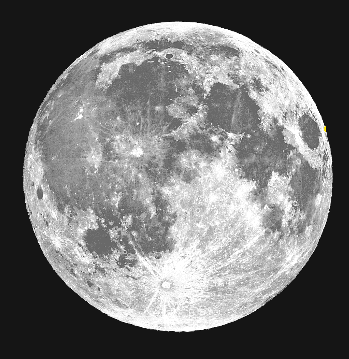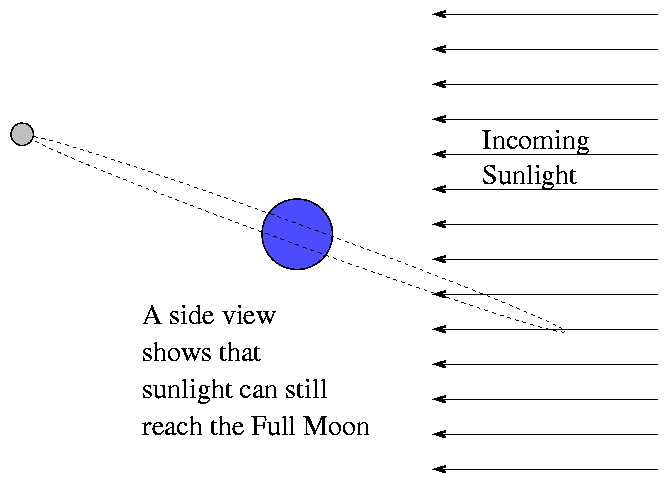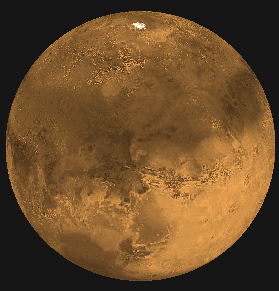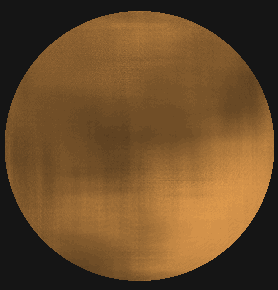
Tonight's main event is the total lunar eclipse. Starting at about 6:00 PM, the Moon will move through the Earth's shadow.

The Moon will first encounter the penumbra, the outer portion of the shadow, which blocks only a portion of the solar disk. You may detect a slight dimming of the lunar surface as the Moon moves deeper into the penumbra. At around 7:00 PM, the Moon will start to enter the umbra, the central portion of the shadow. In this region, the Earth blocks the Moon's view of the Sun completely. However, a little sunlight manages to reach the Moon by travelling through the Earth's atmosphere, which bends it around the edge of the Earth. This refracted light is a deep red, for exactly the same reason that a sunset is deep red: red light penetrates the dusty, dirty, cloudy air of the Earth better than blue light. You should notice the Moon's drastic change in brightness and color as it creeps into the umbra. The show will reverse around 9:00 PM, as the Moon leaves the umbra and grows brighter. By 10:00 PM, it may be hard to notice anything out of the ordinary.
As the Moon moves through the Earth's shadow, it will become much dimmer than usual. Try using the text below to measure its brightness. Walk to an area far from any artificial light and hold the paper so that only moonlight falls upon it. How small is the smallest text you can still read?
Rutabega washing rice snow buckle.
Dry hat foosball calendar telephone piglet strand.
Elf win book game freeze bin test in the cough music throw fourth quarter.
Necromancer stinking boffo insipid crutch steal man drink eat insolent dripping bulb quandrary.
 |
 |
| 6:30 PM | 7:00 PM |
 |
 |
| 7:30 PM | 8:00 PM |
 |
 |
| 8:30 PM | 9:00 PM |
The Moon orbits the Earth once each month. Every 29.53 days, we see a Full Moon as the Moon reaches the point on its orbit opposite the Sun. In this view of the Moon's orbit from above, it looks like the Earth should block any sunlight from reaching the Moon. So why isn't there an eclipse every month?

The answer is simple: the Moon's orbit is tilted by about 5 degrees with respect to the line connecting the Sun and the Earth. A view from the side reveals what happens during 90% or so all Full Moons:

You may recall the excitement several months ago when Mars reached the closest point in its orbit to Earth. At that time, the two planets were "just" 55.8 million km (35 million miles) apart. Newspapers and television reporters told us that it was our chance to get the best views of Mars we'd ever see in our lifetimes.
Well, it really wasn't such a big deal. Every two years or so, the Earth passes Mars as they both revolve around the Sun. While it is true that the two planets were closer than usual in 2003, it wasn't a huge improvement over some other recent approaches. In 1956, Mars came within 57.0 million km, and in 1971, Mars came within 56.2 million km. So while this was a record, it beat the previous closest approach by less than one percent. So don't worry: if you didn't see Mars at its best in August, there will be several other apparitions within your lifetime which will show you just as much.
Tonight, Mars is about twice as distant as it was in August: 102 million km. Its disk is now only 14 arcseconds across, compared to about 25 arcseconds at its best. It's harder now to make out some of the final detail, but if you look closely with a telescope, you may be able to see one of the icy polar caps and some of the surface markings.


The image on the left shows a simulated picture of the planet at 10:00 PM tonight. Don't expect your view through the eyepiece to resemble this! As light from Mars passes through the Earth's atmosphere, it becomes scrambled by turbulence and motions of the air. As a result, our view will more likely resemble the picture on the right, which has been blurred with a filter 3 arcseconds wide. If you are persistent and watch for several minutes, you may catch a moment when the air becomes still. In that second of sharpness, you might expect to see as much detail as appears in this picture, taken here at the RIT Observatory with our 12-inch telescope. Professor Tracy Davis combined about 50 individual snapshots to make this composite:




If you have a chance to look at Mars through a telescope, draw everything you see in the boxes above.